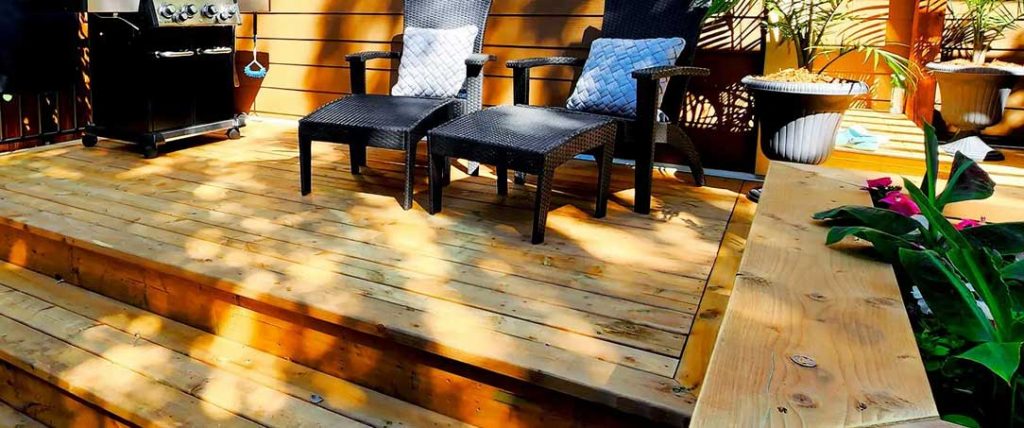Choosing between painting or staining your deck in Canada involves considering factors like climate, maintenance, aesthetics, and the wood type. Both options have pros and cons that can influence the longevity and appearance of your deck. Here’s a guide to help you decide whether to paint or stain your deck:
Painting vs. Staining: Key Considerations
Climate and Weather Exposure
- Canada’s diverse weather conditions, including heavy rain, snow, and UV exposure, can significantly impact your deck.
- Stain tends to penetrate the wood, providing a natural look and allowing the wood to breathe, which is ideal for areas with fluctuating temperatures and moisture.
- Paint provides a thicker barrier on top of the wood, offering excellent protection against moisture but is more prone to peeling and cracking over time in extreme weather conditions.
Deck Material and Condition
- Stain works best on natural woods, highlighting the grain and natural beauty. It’s suitable for cedar, redwood, or pressure-treated lumber decks.
- Paint can cover imperfections, making it a better choice for older decks or if the wood is damaged and needs a fresh look.
Aesthetic Preferences
- Stain offers a more natural, rustic appearance, enhancing the wood’s grain. It comes in clear, semi-transparent, and solid colors, giving options from light to rich, dark tones.
- Paint allows for a broader range of colors and finishes (glossy, semi-gloss, matte), letting you match your deck with your home’s exterior.
Maintenance and Longevity
- Stain generally requires reapplication every 2-3 years for transparent or semi-transparent finishes and up to 5 years for solid stains. However, it wears away gradually, making touch-ups easier.
- Paint can last 5-10 years, but it requires a thorough prep job and is more challenging to maintain since peeling paint needs to be scraped and repainted.
Slip Resistance
- Stain typically provides a more natural, slip-resistant surface, which is safer during wet conditions common in many parts of Canada.
- Paint, especially if glossy, can be slippery when wet, though adding a non-slip additive can mitigate this issue.
Ease of Application
- Stain is easier to apply, as it doesn’t require as much surface preparation and doesn’t hide the natural wood, so minor application flaws are less noticeable.
- Paint requires more prep work, including priming and possibly sanding, especially if there are previous coatings to remove.
Pros and Cons of Painting Your Deck
Pros:
- Offers a wide range of color choices.
- Hides imperfections and provides a clean, uniform look.
- Provides strong protection against UV rays and moisture.
Cons:
- Prone to peeling, chipping, and cracking, especially in extreme weather.
- Requires significant prep work and maintenance over time.
- Can be slippery unless treated with a non-slip additive.
Pros and Cons of Staining Your Deck
Pros:
- Enhances the natural beauty of the wood grain.
- Penetrates the wood, providing a protective seal against moisture.
- Easier to reapply and maintain over time.
Cons:
- Limited color options compared to paint.
- Requires more frequent reapplication, especially with lighter stains.
- Offers less coverage for imperfections.
Final Recommendation:
Choose Stain If: You prefer a natural look, have a newer deck, want easier maintenance, or need slip resistance. It’s ideal for highlighting wood grain and suits Canadian weather conditions better due to its breathability.
Choose Paint If: You have an older deck with imperfections, want a bold color choice, or need the strongest moisture barrier. Be prepared for more prep and ongoing maintenance.
Ultimately, the decision between painting or staining depends on your deck’s condition, personal style, and willingness to maintain the finish. Both options can provide beautiful results—just tailored to different needs and tastes!



